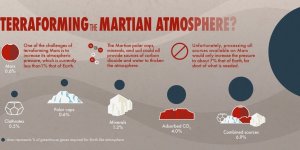| News / Space News |
Cassini Finds Global Ocean in Saturn's Moon Enceladus
NASA | SEPTEMBER 26, 2015
A global ocean lies beneath the icy crust of Saturn's geologically active moon Enceladus, according to new research using data from NASA's Cassini mission.

Illustration of the interior of Saturn's moon Enceladus showing a global liquid water ocean between its rocky core and icy crust. ![]()
Researchers found the magnitude of the moon's very slight wobble, as it orbits Saturn, can only be accounted for if its outer ice shell is not frozen solid to its interior, meaning a global ocean must be present.
The finding implies the fine spray of water vapor, icy particles and simple organic molecules Cassini has observed coming from fractures near the moon's south pole is being fed by this vast liquid water reservoir.
Previous analysis of Cassini data suggested the presence of a lens-shaped body of water, or sea, underlying the moon's south polar region. However, gravity data collected during the spacecraft's several close passes over the south polar region lent support to the possibility the sea might be global.
The new results, derived using an independent line of evidence based on Cassini's images, confirm this to be the case.
Enceladus has a tiny, but measurable wobble as it orbits Saturn. Because the icy moon is not perfectly spherical and because it goes slightly faster and slower during different portions of its orbit around Saturn the giant planet subtly rocks Enceladus back and forth as it rotates.
The mechanisms that might have prevented Enceladus' ocean from freezing remain a mystery.
Cassini is scheduled to make a close flyby of Enceladus on Oct. 28, in the mission's deepest-ever dive through the moon's active plume of icy material. The spacecraft will pass a mere 30 miles (49 kilometers) above the moon's surface.
YOU MAY ALSO LIKE





